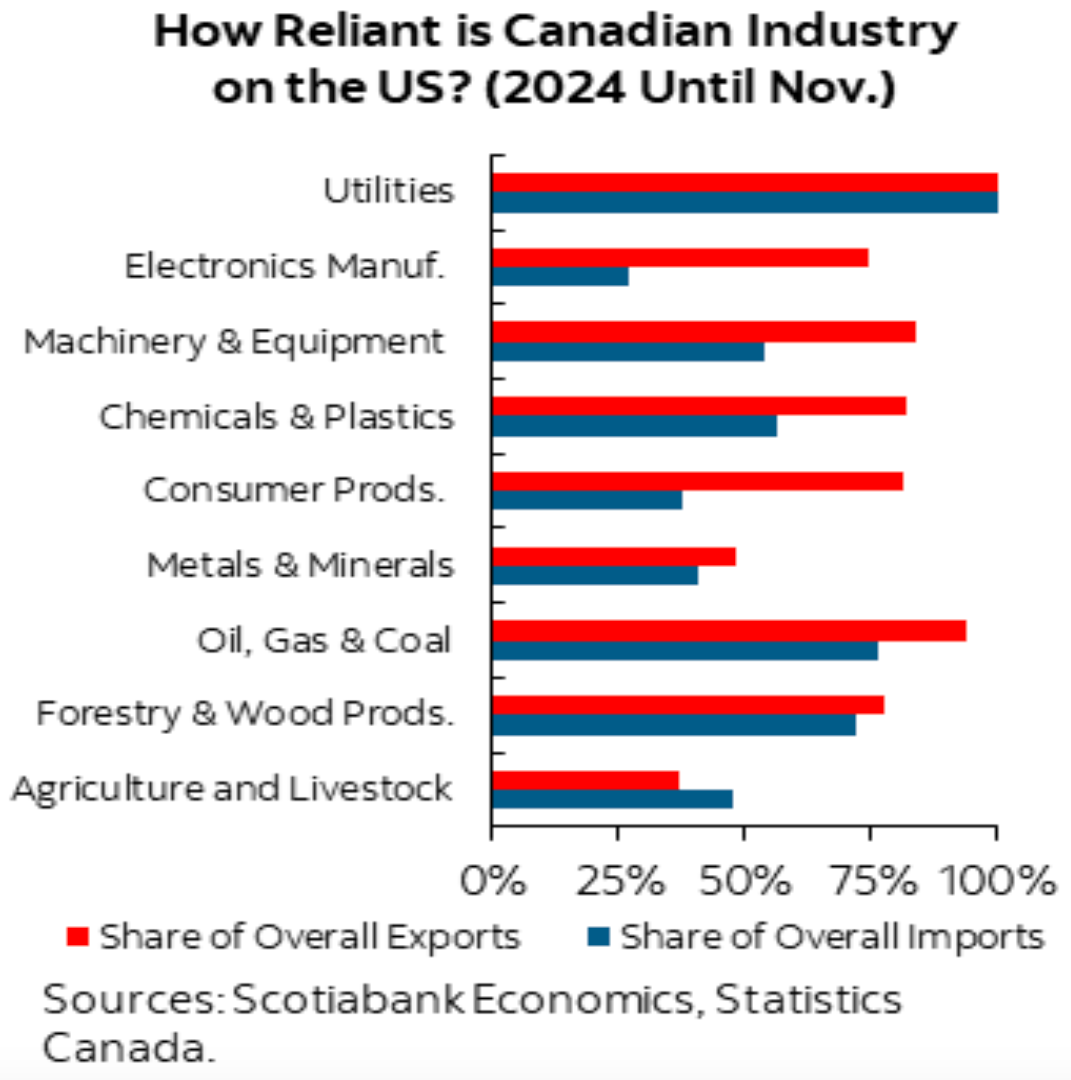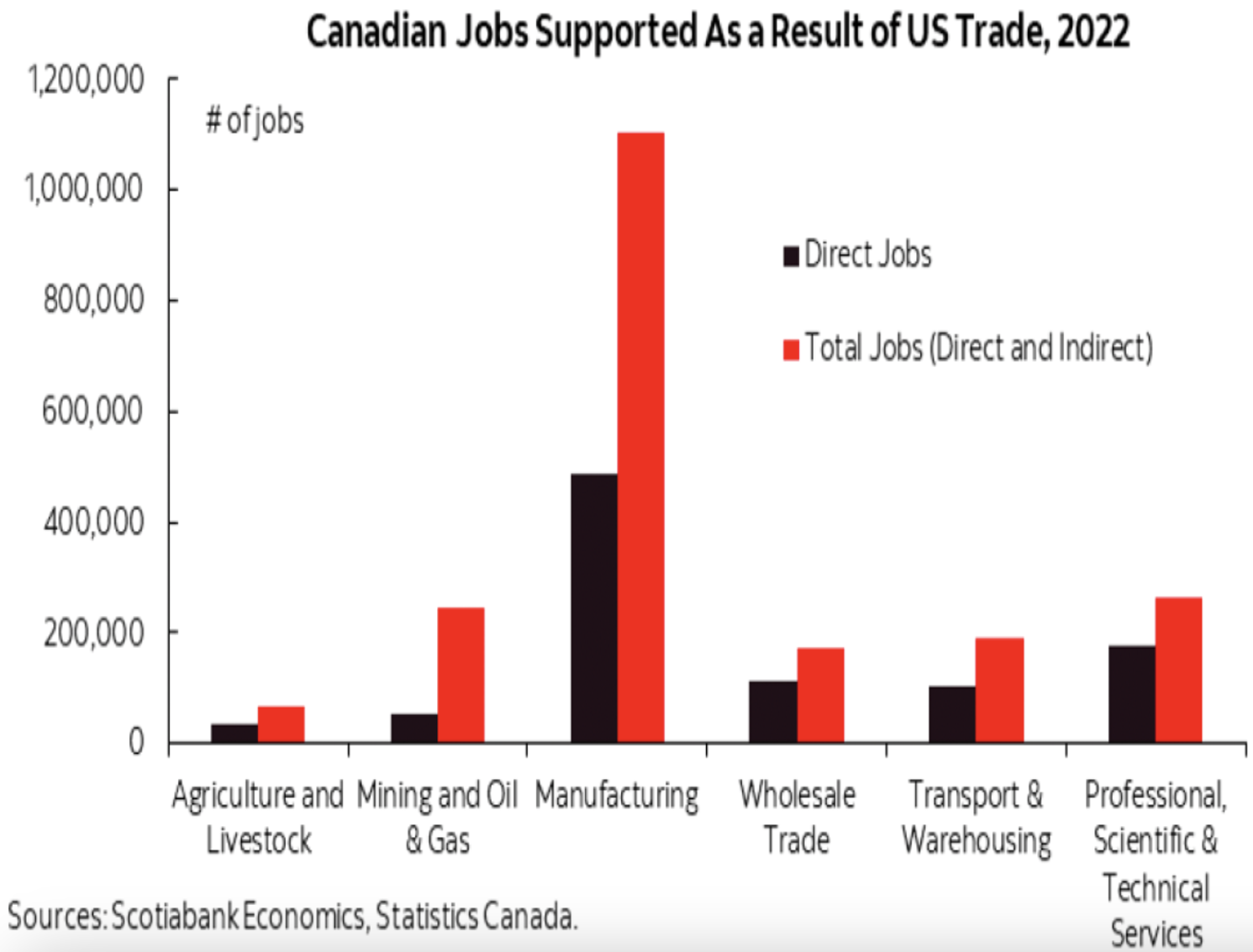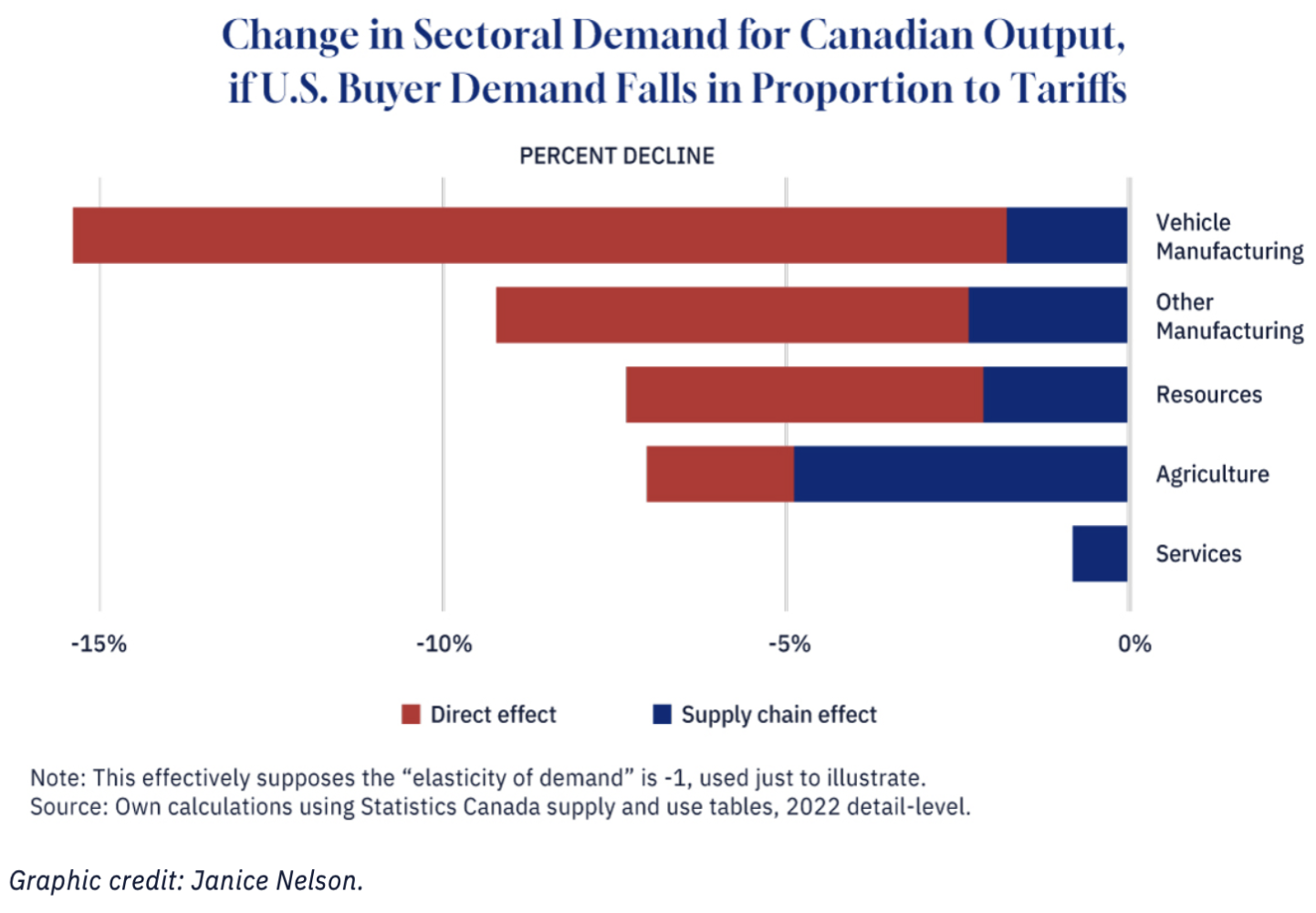Articles / Tariffs: An ASBB Economics and Research Style Blog
Now is the Time to Choose Canada: Why Buying Local Matters More Than Ever
“Now is the time to choose products made right here in Canada. Check the labels. Let’s do our part. Whenever we can, choose Canada.” — Justin Trudeau
The Impact of Tariffs on Canada
Prime Minister Justin Trudeau recently urged Canadians to support homegrown businesses by buying Canadian-made products. This call to action comes in response to the new 25% U.S. tariffs on Canadian goods, which have reignited trade tensions between the two nations. But how do these tariffs affect Canadians, and why is choosing local products so crucial?
What Are Tariffs and Why Do They Matter?
A tariff is a tax imposed on goods crossing international borders, increasing the price of imported products. While some countries use export tariffs to control resource distribution, the U.S. Constitution prohibits export tariffs, meaning the U.S. relies heavily on import tariffs to protect its domestic industries from foreign competition.
Historically, tariffs have served as a double-edged sword—protecting local industries while simultaneously increasing consumer costs. President Donald Trump famously called tariffs the “greatest things ever invented”, leveraging them to force trade concessions.
Canada, in response to U.S. tariffs, has implemented countermeasures of its own, creating a cycle of economic retaliation. While these trade strategies are aimed at strengthening national economies, they often lead to higher consumer prices and disrupt global trade relationships. Below are a few industries we are reliant on our US partners for.
Graph 1 : What industries are Canadians most reliant on the US for?

Many industries rely on the U.S. for 74% to 100% of their exports, as shown by graph 1 except agriculture and metals/minerals.
Machinery and equipment, including cars and car parts, made 21% of overall export goods in 2024 (jan-nov).
Most industries (except agriculture and livestock) export more goods to the U.S. than they import from it shown from graph 1.
Canada gets about 34% of its production materials from the U.S. but sends 75% of its own materials there.
Graph 2: Canadian Jobs Supported As a Result of US Trade, 2022.

U.S. trade supported 2.04 million jobs in Canada in 2020.
Over half (54%) of those jobs came from manufacturing activities shown by graph 3.
Transport & Warehousing also contributes a significant proportion in the total number of jobs as seen in graph 3.
Graph 3: Change in Output Demand of US Demand Falls, 2022.

These tariffs would affect about 80% of the $600 billion we export to the U.S. every year.
According to Graph 4 , Vehicle manufacturing could lose over 15% of U.S. demand, and some parts of the sector might see losses as high as 25%.
As per Graph 4, Other manufacturing industries could face a 10% drop in demand.
The resource and agriculture sectors might see demand fall by around 8%.
How Are Tariffs Used as a Bargaining Tool?
Retaliatory Measures
Countries often impose tariffs in response to trade restrictions. For example, the Smoot-Hawley Tariff Act of 1930, meant to protect U.S. industries during the Great Depression, led to global retaliatory tariffs, deepening the economic crisis.
Leverage in Trade Negotiations
Nations impose tariffs as a way to push for better trade agreements. The U.S.-China trade war (2018-2020) saw both countries imposing tariffs on billions of dollars’ worth of goods to force more favorable trade terms.
National Security Considerations
Tariffs are sometimes justified on national security grounds. The U.S. tariffs on steel and aluminum (2018) were imposed under Section 232 of the Trade Expansion Act, citing concerns about over-reliance on foreign metals.
Revenue Generation for Less Industrialized Nations
In many developing nations, tariffs serve as a primary source of government revenue, funding infrastructure and governance in the absence of efficient tax systems.
Sector-Specific Protectionism
Countries use tariffs to protect vulnerable industries. The European Union’s Common Agricultural Policy (CAP) employs tariffs and subsidies to protect European farmers. Similarly, Japan imposes high tariffs on rice imports to safeguard its agricultural sector.
Canada’s Economic Vulnerability to U.S. Trade Policies
Canada’s Trade Concentration
A staggering 75% of Canada’s exports go to the U.S., making the country highly dependent on American trade policies.
Key trade statistics:
74% to 100% of exports from major industries rely on U.S. trade, except for agriculture and metals.
Canada imports 34% of its production materials from the U.S. but sends 75% of its own materials there.
2.04 million Canadian jobs were supported by U.S. trade in 2020.
The vehicle manufacturing sector could see a 15-25% decline in U.S. demand due to tariffs.
Predicting the Outcome: Stolper-Samuelson Perspective
According to the Stolper-Samuelson theorem, trade policies impact income distribution by benefiting the scarce factor of production while harming the abundant one. Given that Canada is a resource-rich, labor-intensive economy, the imposed tariffs on exports will disproportionately affect manufacturing and industrial workers, causing job losses and wage stagnation in these sectors.
Predictions based on this theorem suggest:
U.S. consumers will bear the cost of higher prices, leading to eventual domestic pressure to lower tariffs.
Canadian industries may shift towards alternative markets like Europe and Asia to offset losses.
Negotiations will likely result in compromises to reduce trade barriers due to economic strain on both sides.
While short-term impacts may be severe, long-term adjustments could lead to a more diversified Canadian economy with reduced dependency on the U.S.
Learning from History: The Smoot-Hawley Tariff Act
The situation today is eerily similar to 1930, when the U.S. passed the Smoot-Hawley Tariff Act to protect American industries. Instead of boosting the economy, this move triggered a global trade war, causing worldwide economic distress. Canada must learn from history and diversify its trade relationships to avoid similar repercussions.
How Can Canada Reduce Its U.S. Trade Dependence?
Expand Global Trade Relations – Strengthening ties with Europe, Asia, and emerging markets will reduce over-reliance on U.S. trade policies.
Support Industry Competitiveness – Investing in sectors like manufacturing, technology, and renewable energy will ensure long-term growth and economic resilience.
Enhance Domestic Trade Readiness – Government programs should help businesses adapt to tariff fluctuations through economic support and trade-readiness strategies.
Strengthen Interprovincial Trade – Encouraging domestic trade partnerships can provide local businesses with alternative markets and reduce dependency on the U.S.
Nova Scotia’s Trade Crisis: A Local Perspective
The impact of tariffs is particularly severe for Nova Scotia, where fish products account for 22.4% of exports to the U.S. A 25% tariff would lead to declining revenues, job losses, and reduced competitiveness in the province’s key industries.
Other affected industries:
Pulp and Paper (2.2%)
Plastics (1.1%)
Transportation & Warehousing
ASBB’s Recommendation to Government and Local Businesses:
A potential 25% U.S. tariff on Canadian exports is a direct threat to Canada’s economy and job market. This is not just a trade dispute—it’s an opportunity to rethink Canada’s economic future.
What Can You Do?
✅ Buy Canadian – Support local businesses and reduce reliance on imported goods. ✅ Check the Labels – Look for Made in Canada products when shopping. ✅ Encourage Trade Diversification – Advocate for policies that expand Canada’s global trade relationships. ✅ Stay Informed – Understand how trade policies impact Canada’s economic future and take action.
Final Thoughts
The trade relationship between Canada and the U.S. is at a critical juncture. By supporting local industries, advocating for diversified trade, and learning from historical trade mistakes, Canada can build a stronger, more resilient economy that thrives beyond U.S. dependence.
The time to choose Canada is now. Let’s do our part. 🇨🇦
- admin
Let’s Drive Growth Together
Reach out to us for a free consultation with ASBB Consulting!



